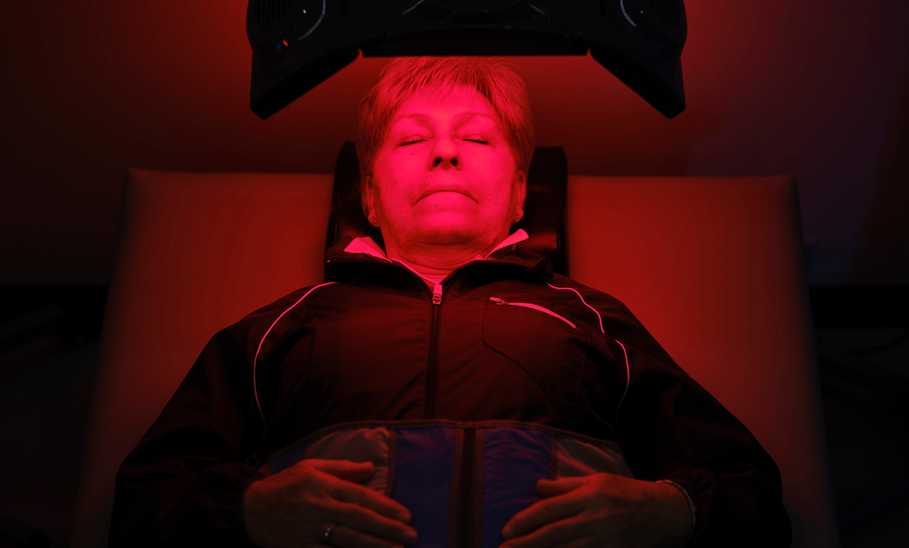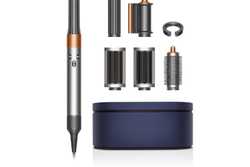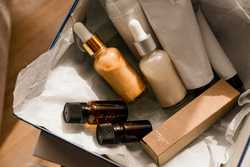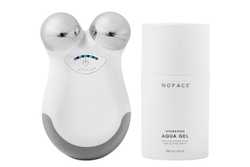What Does Red Light Therapy Do?

Our evaluations and opinions are not influenced by our advertising relationships, but we may earn a commission from our partners’ links. This content is created by TIME Stamped, under TIME’s direction and produced in accordance with TIME’s editorial guidelines and overseen by TIME’s editorial staff. Learn more about it.
Recent studies suggest red light therapy (or RLT) may help enhance the appearance of the skin, managing pain, and healing wounds. This therapy involves exposing the body to low-wavelength red light, which can help increase energy production in cells and provide numerous health benefits, especially for skin and muscle conditions like scarring and tendonitis. Daniel P. Friedmann, MD, a board-certified cosmetic dermatologist at Westlake Dermatology in Austin, Texas, says, “There are many red-light devices on the market for home use, aimed at chronic acne, hair loss, and improving many aspects of skin health or appearance.”
RLT activates the cells’ mitochondria, allowing them to function more efficiently and perform necessary tasks like healing and growth. Red light therapy has the potential to offer a variety of benefits and uses, such as improving skin and hair conditions. However, more research is needed to understand its effectiveness fully, and it is essential to consult with a doctor before considering using it. This step is crucial to ensure your safety and the effectiveness of the therapy. For more on the possible benefits, side effects, and usage of red light therapy, continue reading.
As opposed to LED face masks, skin tightening creams, and other skin care tools, red light therapy devices are a unique type of treatment that use low levels of red or near-infrared (NIR) light to enhance skin appearance, facilitate wound healing of various parts of the body, and help with pain management. Although the naked eye can’t detect infrared light, the human body can sense it as heat. Conversely, red light is visible to the naked eye. Red light therapy is sometimes referred to as low-level laser therapy (LLLT), low-power laser therapy (LPLT), or photobiomodulation (PBM).
Red light therapy is a safe, pain-free method that involves exposing your skin to a device, lamp, or laser that emits red light. Mitochondria, the power generators of your cells, absorb this light, which leads to increased energy production. This process is believed to help repair and rejuvenate cells, which leads to healthier skin and muscle tissue. Red light therapy uses deficient levels of heat and doesn’t expose your skin to harmful UV rays, unlike tanning booths, so it won’t cause any harm or burns to your skin.
However, recent clinical reports suggest that visible light, including red light, could worsen hyperpigmentation and melasma in individuals with darker skin tones, as it can cause melanin to migrate from the basal layer of the skin to the surface. However, more research is needed to confirm these findings. Doctors recommend that people, especially those with darker skin tones, should be cautious of how much and how often they use red light therapy to avoid any potential side effects.
Recent studies also suggest that red light therapy can help reduce neuropathy pain and ease the painful side effects of some cancer treatments. For instance, a phase-three clinical trial demonstrated that red light therapy can reduce oral mucositis in bone marrow transplant patients through a short extraoral application.
Doctors suggest the use of red light can speed up the process of respiration in cells, which can lead to an increase in ATP and other factors that help the body repair. As a result, red light therapy has shown promise in treating and preventing various musculoskeletal conditions, including tendonitis and carpal tunnel syndrome.
Every year, more than 100 million people suffer from skin fibrosis or scarring and an increasing amount of evidence suggests that red light therapy could help control important cell features that contribute to scarring. Red light therapy can be used to reduce the production of collagen in scar tissue, which can help improve or prevent the thickening of scars.
Red light therapy has shown great potential in providing benefits to individuals suffering from brain conditions such as dementia, stroke, depression, and anxiety. Various studies have revealed that this therapy can enhance neuron metabolic capacity, promote anti-inflammatory and antioxidant responses, and stimulate neurogenesis. This can be particularly beneficial for individuals dealing with mood or memory conditions. Additionally, red light therapy may help individuals with Parkinson's disease manage their symptoms and sleep patterns. Due to the low risk involved, many researchers believe that red light therapy will become an essential medical application for brain disorders in the future.
Although red light therapy is advertised as a way to lose weight, its effectiveness is still debatable. However, some studies suggest that using red light may affect the cells that store fat. A study published in Lasers in Surgery and Medicine in 2015 involved 64 obese women. Both groups participated in a 20-minute workout routine three times a week, but only one group received red light therapy. The results showed the group who received red light therapy experienced a more significant reduction in fat mass, which suggests that it may help improve metabolic flexibility.
Even though RLT is generally considered safe, individuals who have photosensitivity conditions like lupus or are taking medications that make them photosensitive should avoid using red light therapy. Pregnant women should also be cautious as there is not enough research on the safety of red light therapy during pregnancy.
Red light therapy devices can be classified into two categories: One includes non-medical grade handheld devices and panels, while the other includes consumer-grade or medical-grade panels. The most significant difference between consumer-grade and medical-grade LED devices is the technical term "irradiance." Red wavelengths penetrate about three millimeters into the skin, while near-infrared wavelengths penetrate about 10 millimeters into the skin, underlying tissue, connective tissue, and bone. The similarity between consumer-grade and medical-grade LED devices ends with the concept of irradiance, which refers to the amount of light absorbed into the skin after it leaves the source. This understanding is crucial in selecting the appropriate device for your requirements.
LED light therapy devices can be of various sizes, and size plays a significant role in their effectiveness. For example, while a tablet-sized device may be suitable for spot treatment, a set of four full-sized panels linked together may be necessary for full-body treatment. This is because larger devices have more LED bulbs, and the overlap between beams emitted by each bulb results in consistent coverage, which can provide better results and reduce treatment time.
Dr. Friedmann says, “Unfortunately, the data is often limited, not based on rigorous clinical research or merely theoretical. In other words, just because red light can decrease inflammation, kill acne bacteria, and have positive effects on hair growth in a laboratory cell culture does not at all guarantee that a very soft red light shone from a device at home will have any clinical benefit. At best, consistent, uninterrupted daily use may give some clinical benefits, but they rarely take the place of well-studied medical and cosmetic treatments offered in-office.”
When a light source diffuses light, the photons of light approach the skin at an angle; most of these photons either bounce off the skin or get absorbed into the outermost layers. To achieve therapeutic effects, the light needs to be absorbed much more deeply. LED bulbs deliver directional light, which enables more powerful absorption, whereas fluorescent light diffuses it. Even if the wattage is the same, directional wavelengths are absorbed into the body's tissues much more effectively as they travel perpendicular to the skin. Fewer wavelengths will bounce off the skin at an angle, and more will be absorbed into the body's tissues.
When comparing devices, look for the highest light energy output measured in milliwatts per square centimeter, or mW/cm². The treatment's potency increases with higher mW/cm².
To receive optimal therapeutic benefits, measure the irradiance at a distance of 6 to 8 inches from the skin. Even though skin-deep benefits can still be obtained, the deep-tissue benefits may be lessened. Medical-grade panels have higher irradiance compared to others. The irradiance delivered by small panels can range from 94 mW/cm2 to 160 mW/cm2, while the larger ones can provide anywhere between 94 mW/cm2 to 185 mW/cm2.
Red light therapy is a non-invasive and easy-to-use treatment for your face at home. To track your progress, take before pictures of your face. Create a schedule that works for you so you remember to use your therapy device. Try to make the experience more enjoyable by using candles, spa music, and aromatherapy to create a relaxing atmosphere.
Although LED lights don’t emit harmful UVA or UVB rays, it’s still necessary to wear protective eyewear while using the device to safeguard your eyes. To begin, start with a 10 to 20 minute session three times weekly and gradually increase your usage to five weekly sessions if you have the time. Find a comfortable spot to sit and relax while you enjoy the LED light therapy. By using your red light therapy device three times a week for 20 minutes, you can start seeing results in as little as three weeks. The more consistently you use the device, the faster you’ll see results. Initially, start with three sessions a week and increase to five if your schedule permits. Consistency is vital to achieving optimal results.
To achieve the best outcome, it’s recommended to use the therapy for 15 to 20 minutes three to five times a week. Wear eye protection while using the device and maintain a distance of 6 to 12 inches from it. Red light therapy is primarily used to enhance skin health, reduce inflammation, stimulate collagen production, increase blood circulation, and diminish the appearance of fine lines and wrinkles. Near-infrared light therapy is widely used to alleviate muscle and joint pain, inflammation, and other ailments.
If you plan to use red light therapy at home, it is essential to select a device that emits light of the correct wavelength. Handheld devices are particularly suitable for targeted treatment of specific body areas, while larger devices are more appropriate for full-body treatment.
For maximum benefits from red light therapy, it’s best to experience it in a clinical setting. Most studies are based on medical-grade devices in a doctor's office. Nonetheless, red light therapy is also safe and effective when used at home with masks, lamps, or wands. RLT is an easy way to enhance skin quality gradually, making it a more convenient option than going to a dermatologist's office. But even at home, always protect your eyes with LED-shielding goggles while using red light therapy.
According to dermatologists, red light therapy has no significant side effects. However, those who have a condition with photosensitivity, like lupus or are on photosensitive medications should avoid it. Pregnant women should also be cautious, as there is not enough research about its effects on pregnancy.
In recent years, clinical reports have shown that visible light, including red light, can cause melanin migration from the basal layer of the skin to the surface in those with darker skin tones. This could aggravate hyperpigmentation and melasma. However, further studies are necessary to confirm these findings. Doctors suggest people with darker skin tones be aware of how long and how often they use red light therapy.
The information presented here is created by TIME Stamped and overseen by TIME editorial staff. To learn more, see our About Us page.



